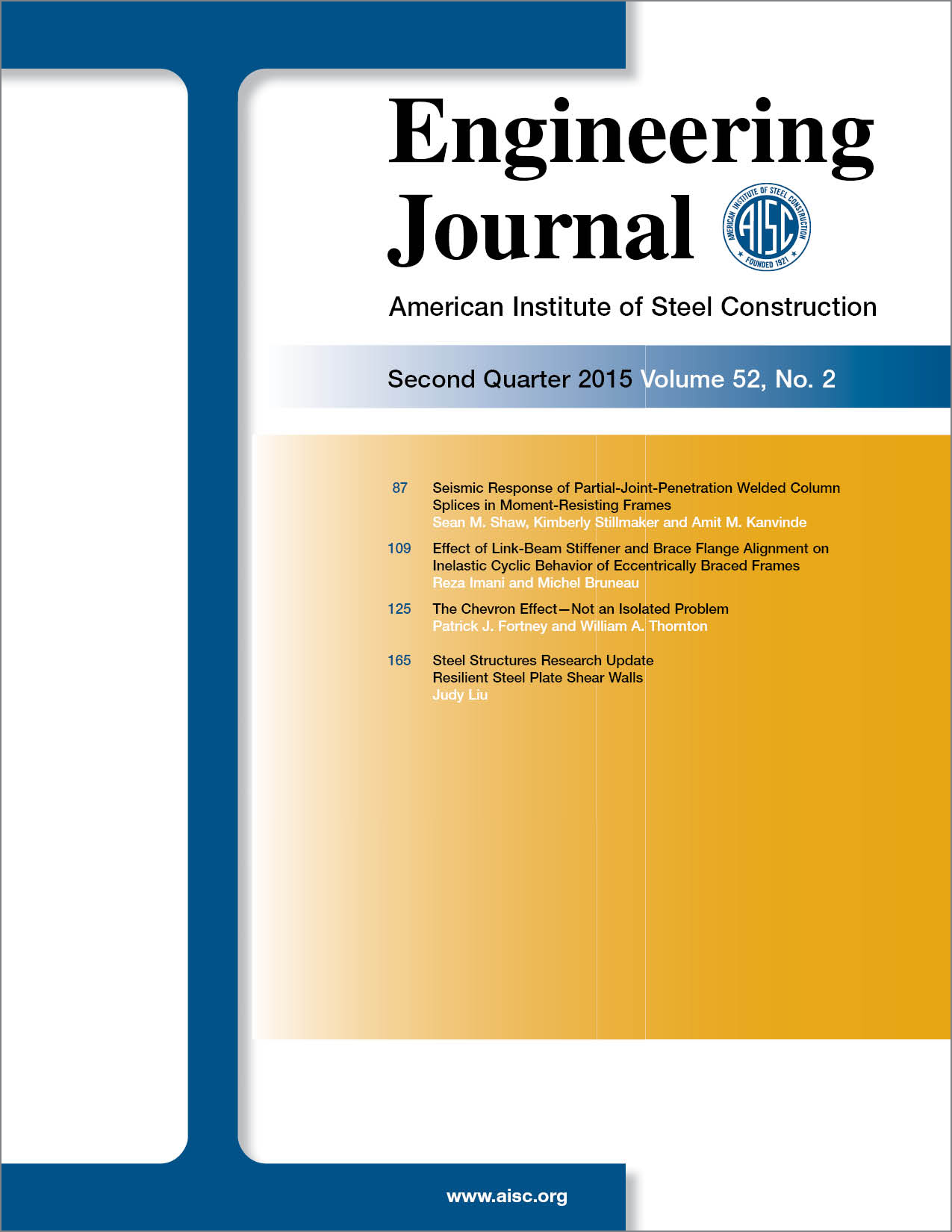Effect of Link-Beam Stiffener and Brace Flange Alignment on Inelastic Cyclic Behavior of Eccentrically Braced Frames
DOI:
https://doi.org/10.62913/engj.v52i2.1081Keywords:
Eccentrically braced frames, EBF failure, eccentricity, offset at brace flange-to-beam connectionAbstract
Finite element analysis was used to investigate the effects of the misalignment of the brace flange-to-beam connection point with the link-end stiffener (referred to as the offset in the paper) on the ductility of eccentrically braced frames (EBF). The offset was speculated to be a possible reason for the unexpected EBF failures observed in the aftermath of the Christchurch earthquake series of 2010 and 2011. EBF models with different detailing at the offset area were analyzed under monotonic and cyclic displacements. Results showed severe stress and strain concentration in the offset area, preventing the EBF from developing its expected ductility, and suggested possible initiation of a failure from the part of link flange located in the offset area. Simulation using the ductile fracture model implemented in ABAQUS resulted in a fracture pattern in agreement with the actual failed EBF. Results from analyses on different detail configurations showed that removal of the offset by modifying the brace section to build an ideal case, or by a simple change in the location of the link stiffener, can mitigate the problem of possible premature failure, with the latter solution being slightly less effective but much easier to be used in practice.

